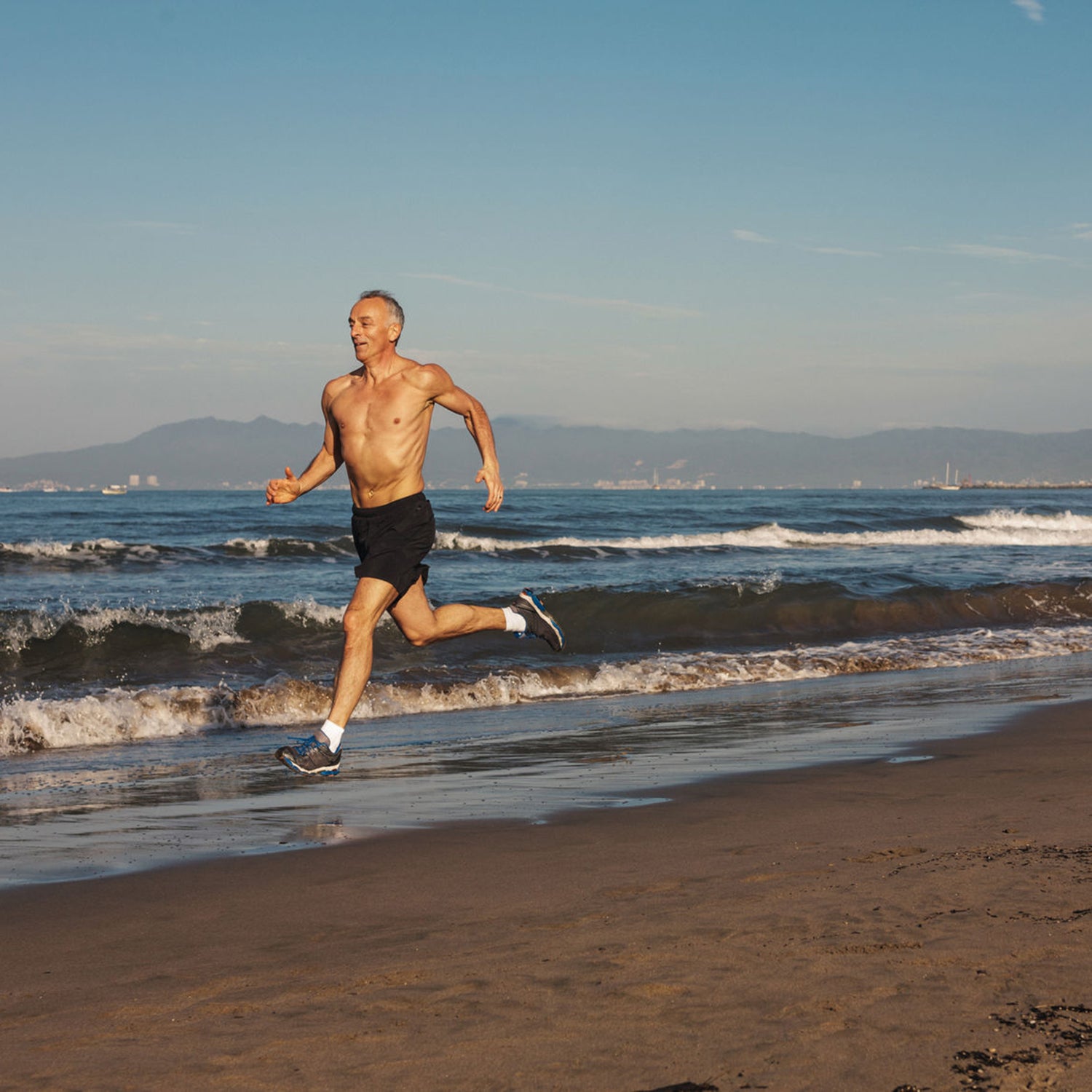It’s no secret that our bodies change as we age. Muscle mass and strength decline, it takes longer to recover from hard efforts, and our capacity to handle high training volumes can diminish. On top of that, mobility decreases and we become more prone to certain injuries. When an older athlete stops training, their fitness deteriorates significantly quicker than it did when they were young—and building it back is much harder.
Your training needs don’t change as you get older. You still want to build cardiovascular capacity, strength, and functional mobility. But the way you approach those goals needs to be tailored to the individual, depending on your current fitness level, injury state, and other lifestyle factors. We asked two experts how your training regimen should evolve as you age.
Increase the Volume
The foundation for any training program—no matter how old you are—is volume. “The training priority is restoring functionality in a safe and graduated manner, particularly for individuals who have been sedentary throughout their life,” says Matt Swift, a CrossFit coach and masters champion who helped develop CrossFit’s specialized Masters Training program, geared toward middle-aged athletes. Matt Owen, a Gym Jones–certified trainer out of St. Louis, echoed that sentiment.
“We need to really build that base of general physical preparedness in order to build other stuff on top of it—strength, power, sport-specific movement,” Owen says. “We’re going to value volume—one to two hours of work every day—over anything else at first. It’s a lot easier to get strong when you’re able to tolerate more work, more time lifting weights, and you’re able to recover faster than if we just pull you in and make you start lifting heavy.”
Think of developing a solid base of fitness like a really good warmup: It’ll keep you safe throughout your training as you work toward more intensive, higher-impact goals.
Address Problem Areas Right Away
Injuries need to be treated on a case-by-case basis, with guidance from a doctor and/or physical therapist, but Owen shared some general training tips for addressing three of the most common injuries in aging athletes: knee, lower back, and shoulder injuries.
Generally, knee and lower-back issues come from a weakened posterior chain—glutes, hamstrings, and calves. To address back pain specifically, Owen recommends movements like and . For knee pain, it’s all about balance: strengthening your hamstrings to take the strain off overcompensating, disproportionately strong quads. Balance is also key for shoulder issues. Owen will assess the upper-back muscles to gauge which ones might be overcompensating and which need to be strengthened using the .
The older you get, the harder it is to come back from an injury. Swift encourages aging athletes to do everything they can to prevent injuries in the first place. “There is no room for being reckless or taking risks with form or technique. You have to understand that not every day will be the same; there will be variations in the training load you can cope with. Make smart choices and back off when the body doesn’t feel right,” Swift says.
Establish a Routine
Swift is committed to debunking the idea that older athletes shouldn’t train hard or with intensity. In fact, strength training is arguably the most important part of maintaining fitness with age, but it’s often sacrificed in favor of cardiovascular exercise. “We need to keep people training hard and consistently. We just need to do so showing greater care and being more conservative with loading patterns and intensity. Older athletes need to be physically challenged just like younger athletes,” Swift says.
Both Swift and Owen recommend a training program that focuses on compound exercises—multijoint movements that work several muscles or muscle groups at one time—and functional movement patterns that use a full range of motion. This isn’t all that different from a workout that either trainer might recommend to a younger athlete, but the key distinction is extra recovery time. Swift recommends three to four sessions of weight training a week for an older athlete and an extra rest day compared to what he might recommend for a younger person.
Regardless of intensity or volume, establishing a regular routine and sticking to it is the most critical part of training as you age. “Don’t stop training, ever. It is genuinely a case of use it or lose it,” Swift says. “Once you stop training at a later age, there is a decline at a much greater rate than for a younger population, and it is considerably harder to get it back.”
Invest in Your Recovery
As you age, your body bounces back more slowly from intense exercise. Successful older athletes should take their recovery as seriously as their training. “Younger athletes can get away with a poor lifestyle and still perform, but older athletes cannot,” Swift says. “Have a good sleep ritual, consistently eat a nutritious diet of real food, and undertake a frequent mobility program.”
Owen agrees that eight to ten hours of proper sleep is the most important part of recovery and training. It recharges the nervous system and rebalances hormones, and it’s the key to any successful weight-loss effort. Owen also recommends daily foam rolling, copious water, and proper nutrition. (Treatments like cryotherapy, acupuncture, and deep tissue massage have also worked for some of his clients, but Owen resists a blanket recommendation for anything beyond do-it-yourself recovery.)
Don’t Forget a Winning Mindset
There are plenty of ways to address the changes in our bodies through exercise and recovery, but an athlete’s most valuable tool is confidence in their body’s ability to adapt. “The mind is primary, and we hold that above everything else. If you can train your mind and condition yourself to expect higher performance and hold yourself to a higher standard, the body will follow,” Owen says.


